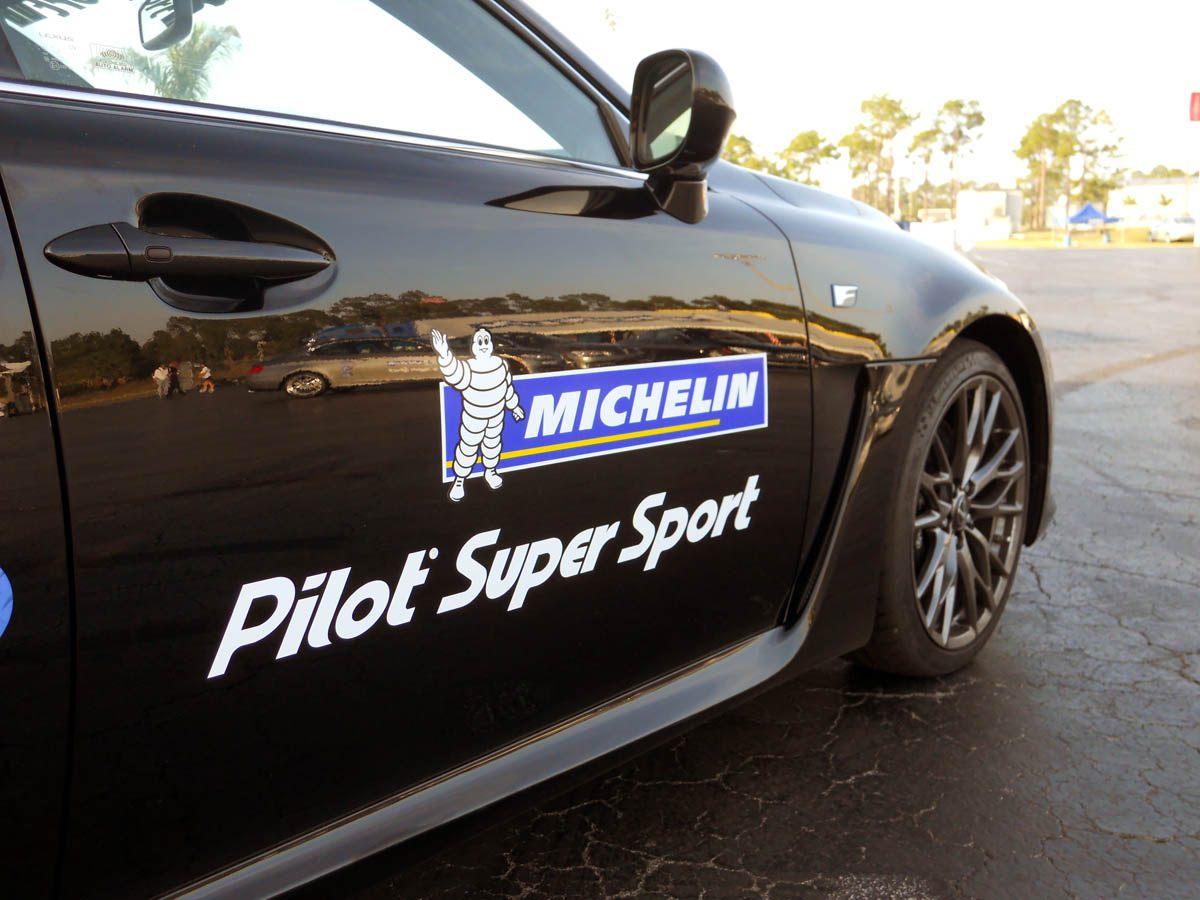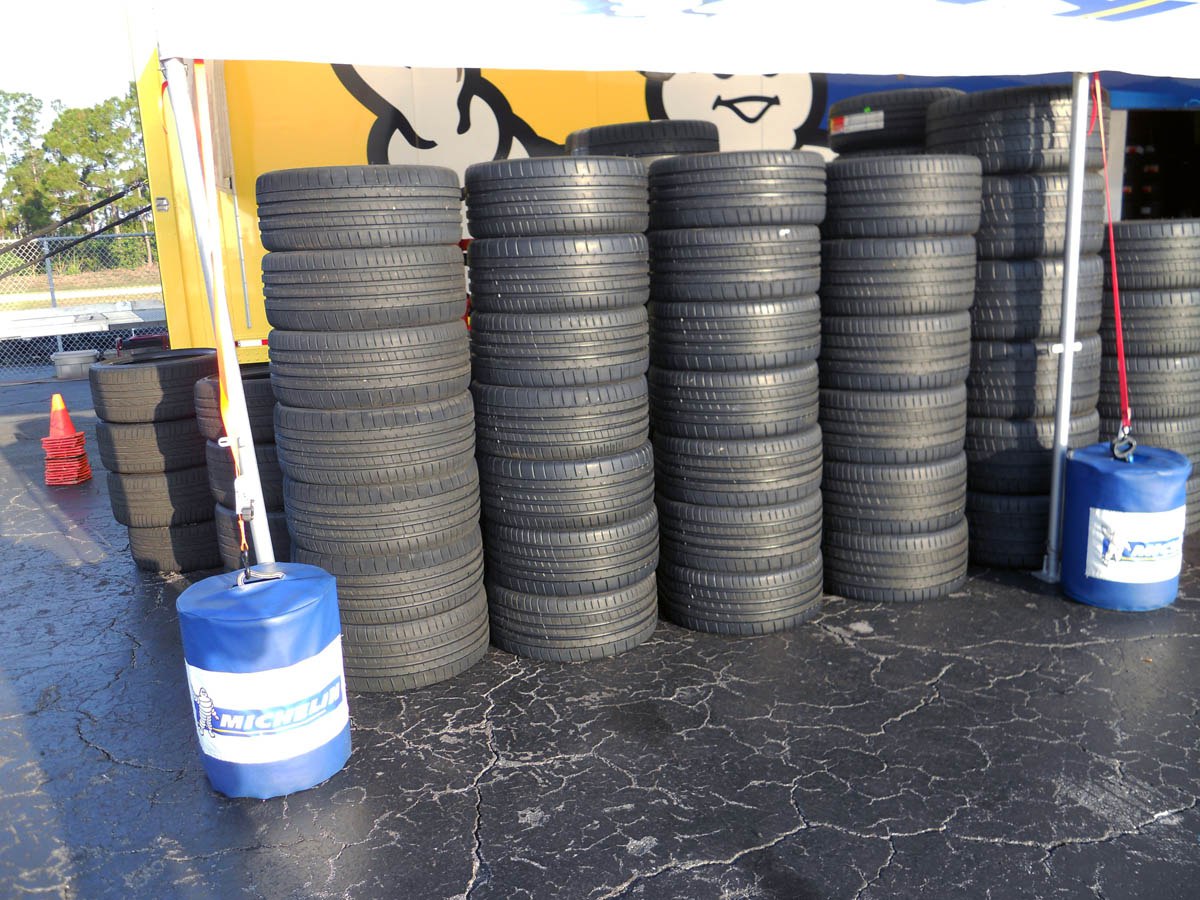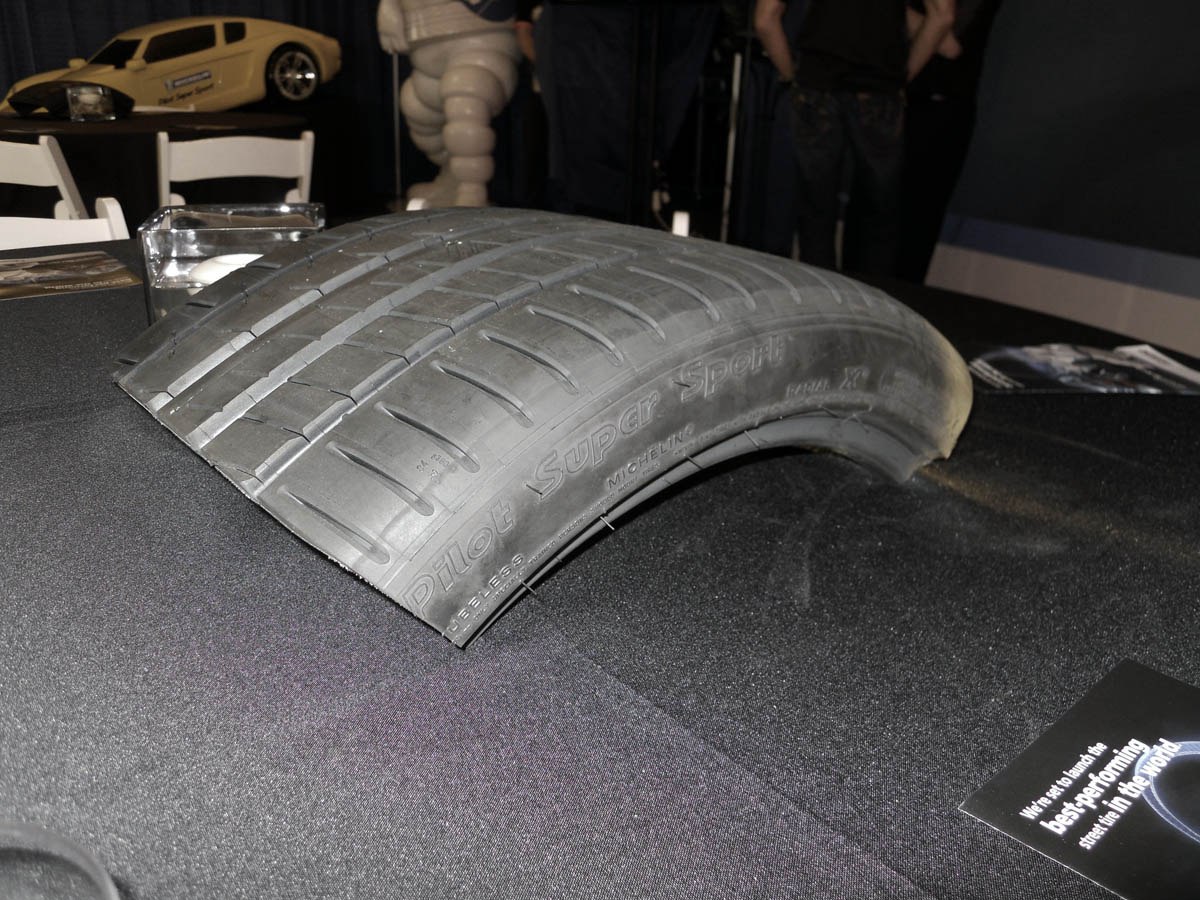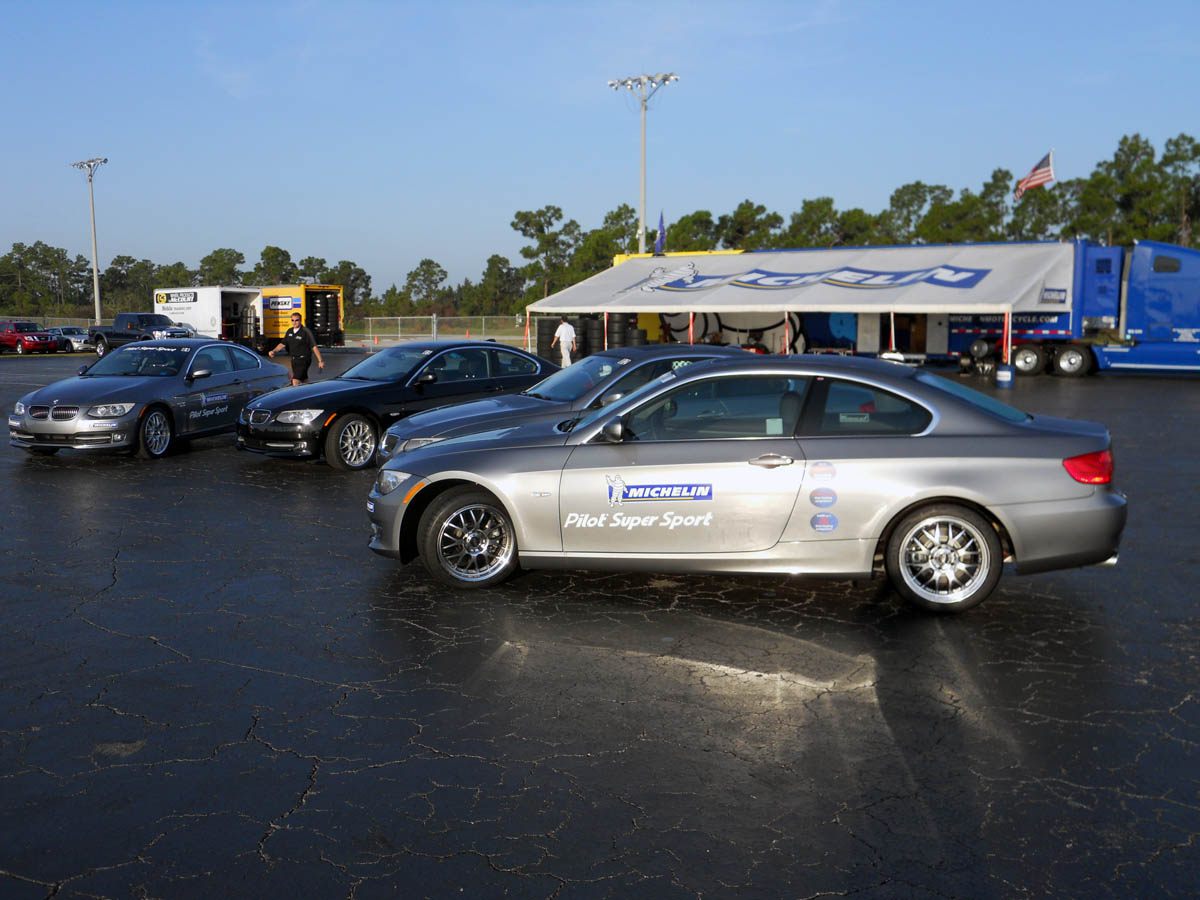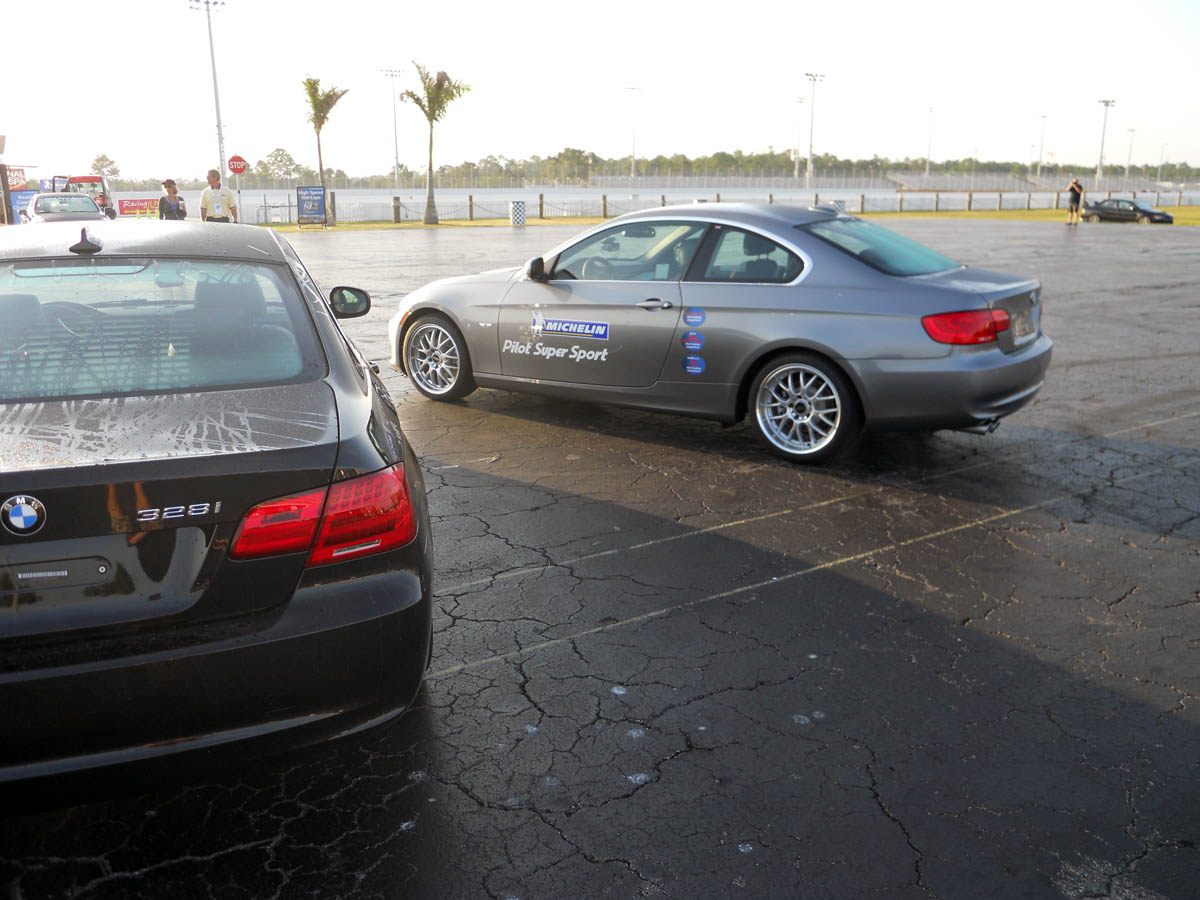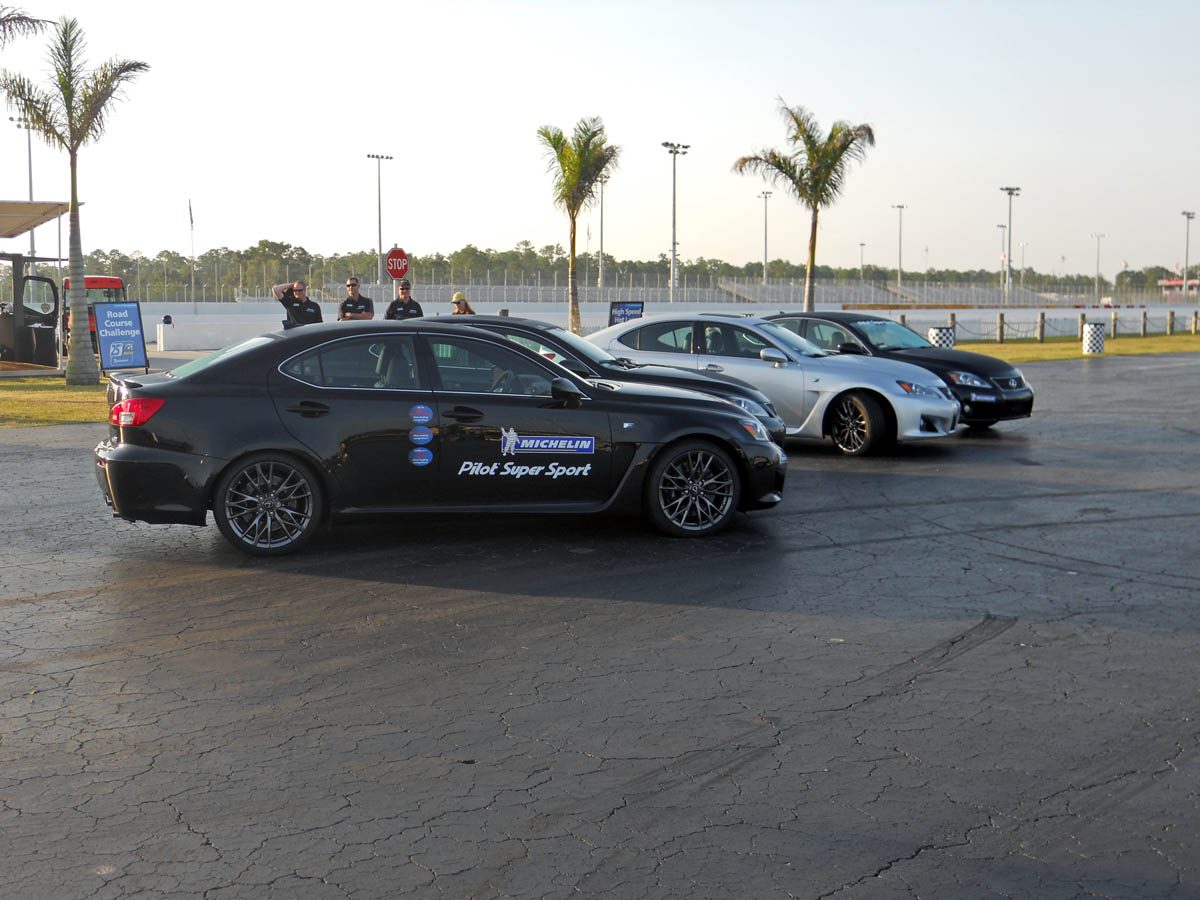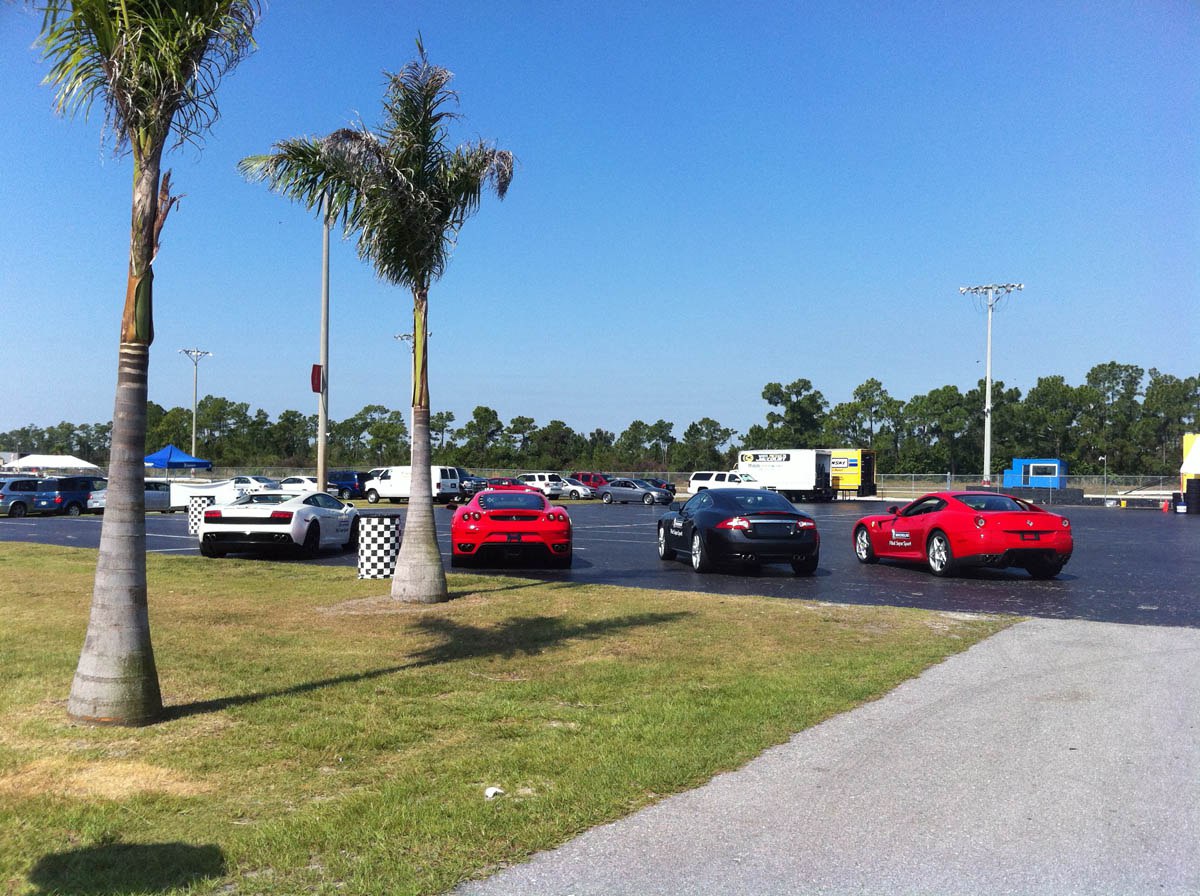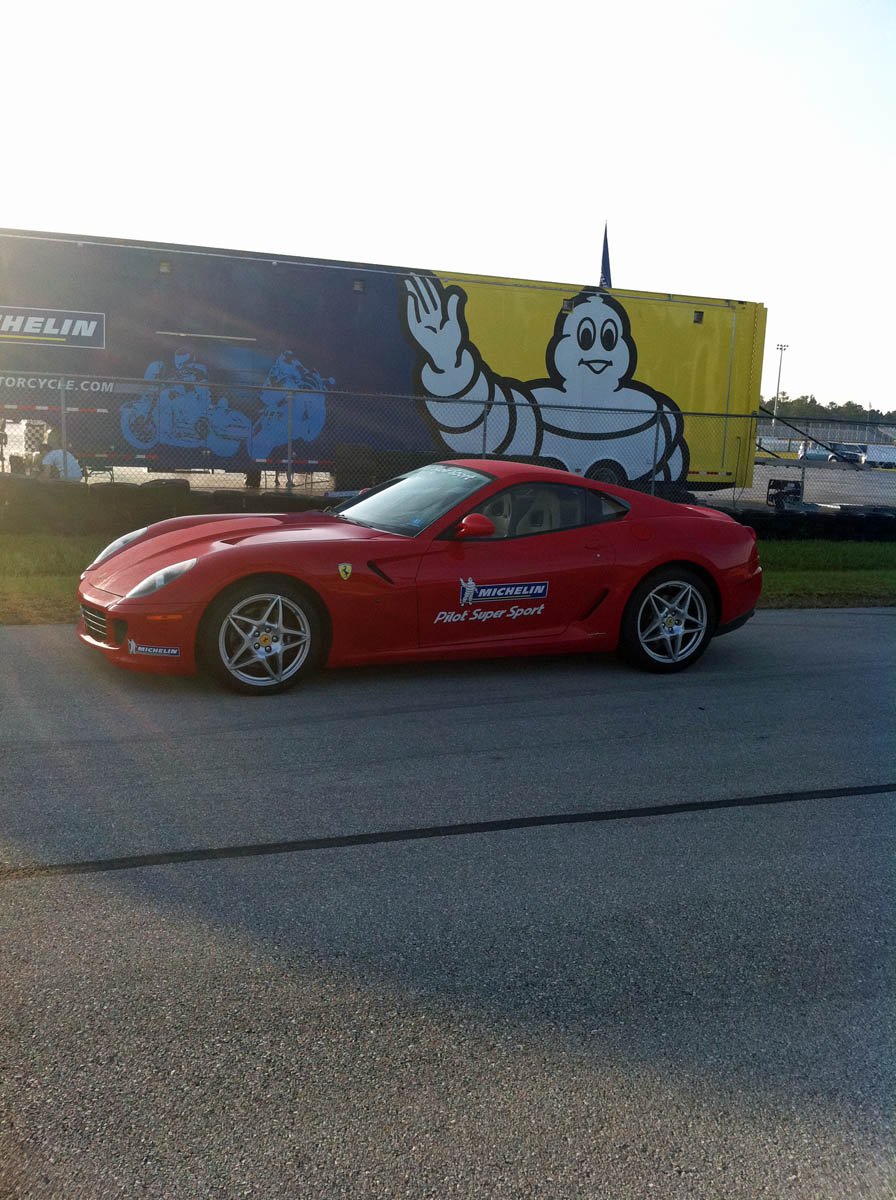The 25th Hour – Testing Michelin’s Pilot Super Sport
Monday I had the pleasure of heading to Palm Beach International Raceway for a very special event put on by Michelin called The 25th Hour. Over the years I’ve had the pleasure of sampling a vast array of tires on different vehicles and have always regarded the Michelin PS2 as the “benchmark” performance tire. The PS2 provides great handling in both the dry and wet, exceptional braking, all while keeping road noise to a minimum. When I first heard that Michelin was working on an even better tire featuring compounds tested in endurance racing to replace the PS2, I was anxious to see if they could deliver an experience better without sacrifices. My desire to test this new tire our grew exponentially as I watched Leh Keen click off a 1:55 lap at Daytona in his GTR last week, a time very close to Rolex GT race pace in a full weight car on a street tire. A few days after returning from Daytona my invite to the 25th hour arrived and I sent off my RSVP immediately. The 25th Hour was setup to give educated drivers a chance to experience the tire in various scenarios versus the competition in order to make their own conclusions on whether Michelin had achieved their goal to re benchmark the PS2. Michelin had their engineering staff on hand to gather feedback from participants and answer any questions we might have. In addition they also gathered rear world data using Performance Boxes to further evaluate and test the tire with end consumers who could provide inside outside their normal proving grounds testing.
Michelin implemented some great technology with the Pilot Super Sport with a goal in mind to improve on all aspects of the tire without sacrifice. They wanted to create a tire that cornered better, had great braking in the wet and dry, all while providing great wear and limited road noise. Those are some stiff goals when you break them down individually, when you make a softer compound wear normally suffers and noise goes up, a harder compound normally sacrifices grip. Michelin Compounded these issues with various solutions to achieve great overall results without sacrifice. The first and likely most important is a dual compound, the outer edge of the tire normally reserved for heavy cornering uses a compound found in their endurance racing tires, while the inner portion of the tire remains a wet compound very similar to that of the PS2. This allows for great wear and rain channeling, while providing the requires grip in cornering. They combined this with a variable contact patch that allows the tire to use the maximum surface area required for each application. Combining these 2 technologies the tire is able to better handle water channeling as well as heat, helping maintain a consistent feel. Twaron belting on the insides of the tire combined with the dual compound allows for a better performing tire, that handles 12% better than it’s leading competitor all while twice as long (a 30k mile wear warranty further backs up these claims).
The first exercise we got to do was an autocross using BMW 3 series on an course setup inside the facilities kart track. I’ve spent many days on full circuit road courses, but must admit I’ve never autocross in my life, making this exercise even more interesting. We tested the PSS against a comparable Continental Extreme Contact DW. Within the first lap the difference was quite apparent, the PSS took everything I threw at it no problems, including some mistakes as a result of my lack of autocross experience. The DW performed quite well, however compared to the Super Sport it felt very floaty and inconsistent. After 3-4 laps on each tire we pulled the cars in to review our opinions and perform a visual inspection on the tires. The Continentals looked as if the outer portions had been hit with a grinder and showed chunking across the outer tread blocks and some light initial blistering. The PSS showed some scuffing, but nothing beyond what you would expect from a tire that was just broken in fresh with 15-20 hot laps on an autocross course.
After the autocross we headed to the drag strip return road for a wet and dry braking test. For this test the comparison tire was the Goodyear Eagle F1, what I consider to be one of the better rain tires out there. We accelerated to 55mph and then panic braked in the dry, followed by a duplicate scenario starting from 45mph in the wet. During these tests a VBOX Performance Box would record the stopping distance, which was entered into an excel spreadsheet on a nearby iPad. After making a few runs on both tires it was difficult to visual tell the difference between tires in terms of visual distance, as a few inches or feet is tough to see format he passenger seat, however in terms of overall feel the PSS shined through once again. The biggest difference was the continued consistency towards the end of the brake, as the F1 fell off the PSS continued to provide valuable feedback until the point the vehicle was stationary. Once the group had finished their runs the Excel sheets where tabulated, the end result was an average of 3.5 feet shorter stops in the dry, and almost 3 feet in the wet, an incredible margin for a brake test. On the street these few extra feet could provide very valuable in a panic situation, on the track it would surely allow for quicker lap times with consistent braking at the limit.
Next on the agenda was testing the PSS in the most demanding environment yet, the full road course at PBIR, with 11 turns and a tad over 2 miles of track to navigate. In this test we would be piloting Lexus’s ISF, with the comparison tire being the Pirelli PZero Nero. I have never driven PBIR at speed so it took a few recognizance laps to get the line down, once I had things figured out I did my best to throw everything I could at both of the tires so I could get an honest assessment. This was also my first time driving the ISF as well and I must say while it’s obviously quite heavy, the power and refined transmission made it feel very comfortable quickly on track, all while providing seating for 4-5 plus groceries. After pushing the cars around the track and navigating the late apex of some of the more complex corners the one word that comes to mind to describe the difference between the tires was consistency. The Pirelli’s kept the car on the track and gave plenty of notice when they were at their limits. The PSS on the other hand was a dream and stayed glue to the track and provided a noticeable amount of additional grip. There were quite a few corners I stuffed the car into at significantly higher speeds than she wanted to go and the PSS tracked right towards the apex, lap after lap. The Pirellis pushed quite a bit driving the exact same line, at similar speeds. The Pilot Super Sports performed lap after lap with amazing consistency where the Pirellis began to get greasy as they got hot making you question if the car was going to go where pointed. This overall test provided the most significant overall testament to how great a tire the Michelin Pilot Super Sport was over the competition.
The day was capped of with hot laps in the passenger seat of various hero cars with experienced drivers behind the wheel. There was an array of exotics with fresh Pilot Super Sports on hand not limited to a Ferrari F430, Ferrari 599GTB, Lamborghini LP560, and a Jaguar XKR . I’ve been fortunate to drive each of these cars on the street, and with the addition of forced induction, but still looked forward to getting a feel for them on track. I was amazed at the consistency of the tires and the amount of grip they provided even after hot lap after hot lap with seasoned pros behind the wheel. Most max and extreme performance tires will get hot after 6-8 laps and get greasy, loosing their consistency. The PSS held up like a champ, even in the heavier cars like the 599GTB, a gentleman’s Ferrari designed for Grand Touring. They obviously did not have the grip levels of a slick, however for a tire that could be driven to the track over 500 miles and then flogged all weekend, the performance was better than expected even in these extreme examples.
After a solid day of testing, I am completely amazed at how great a street tire Michelin has produced. I’m anxious to get a set on my Z4M daily driver very soon so that I can explore their limits even further in a dual purpose track/street environment. I’ve always used Extreme Performance tires on my daily driver, however it will be nice to get similar performance out of a Max Performance Summer tire without sacrificing wet traction and wear as I do with my current tire. The best part of all, Michelin currently has the Pilot Super Sport priced below the PS2 in an effort to prevent consumers from having to decide between Summer and All Season tires based solely on price. The PS2 will eventually be phased out when the PSS is available in all current offerings and OEM replacement sizes. I want to thank Kim Kegler and the entire Michelin team for having me out at the 25th hour, and I look forward to seeing how they’re able to top this next generation tire in the future!
